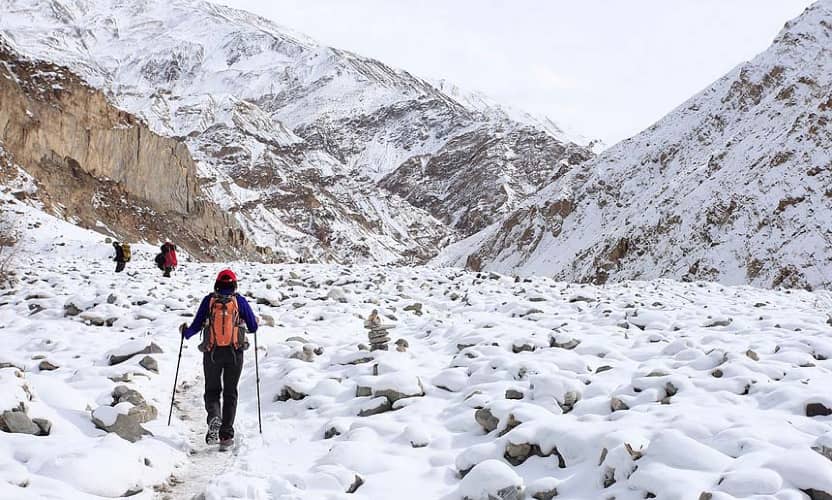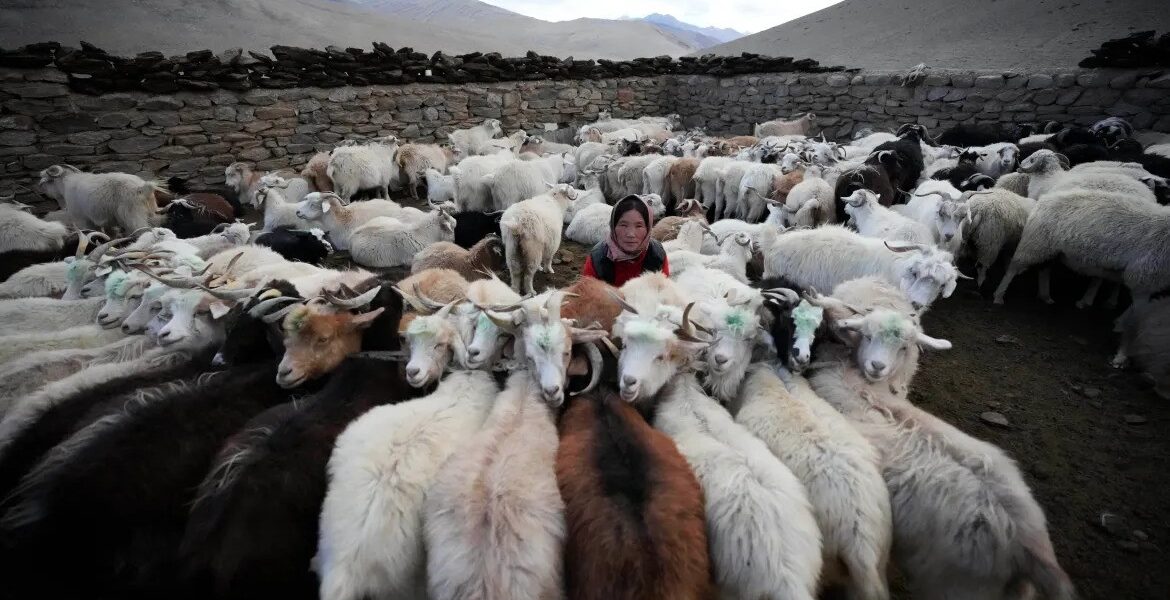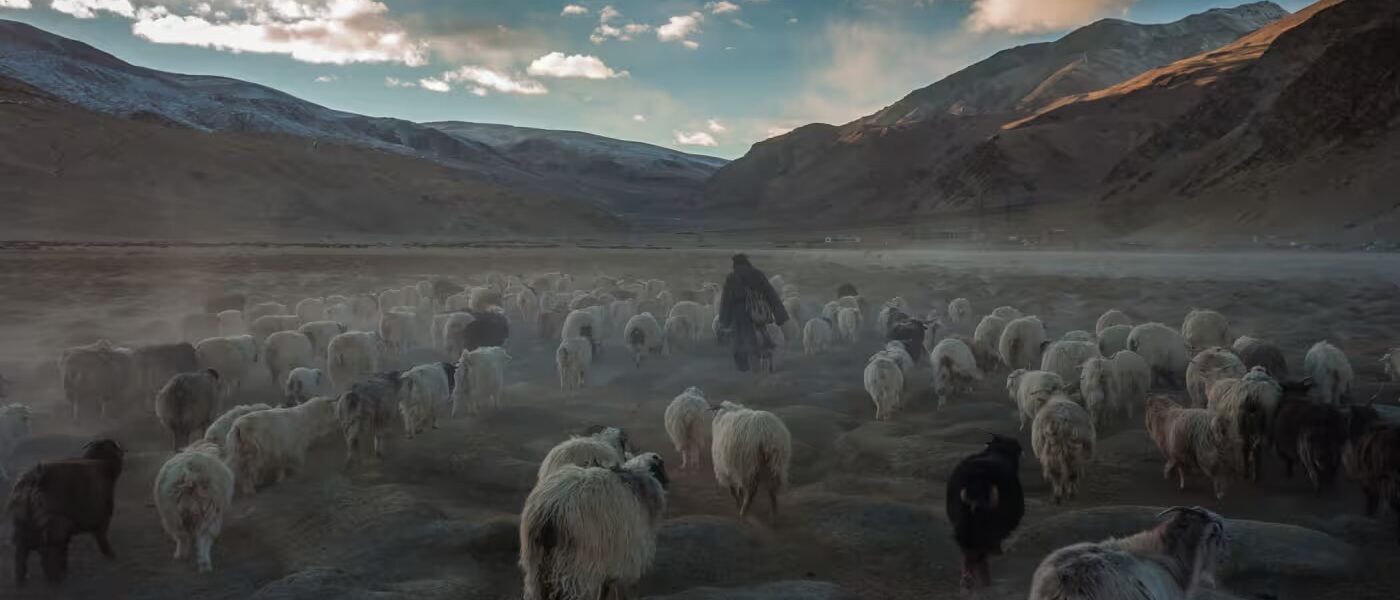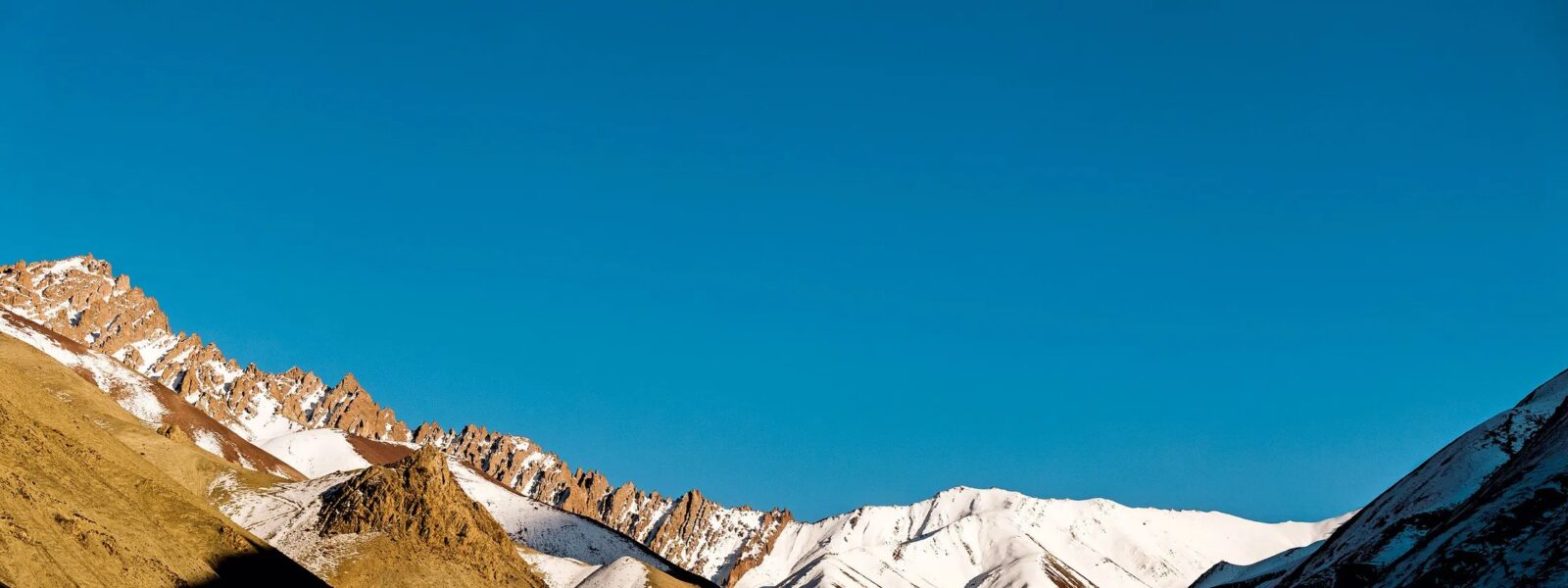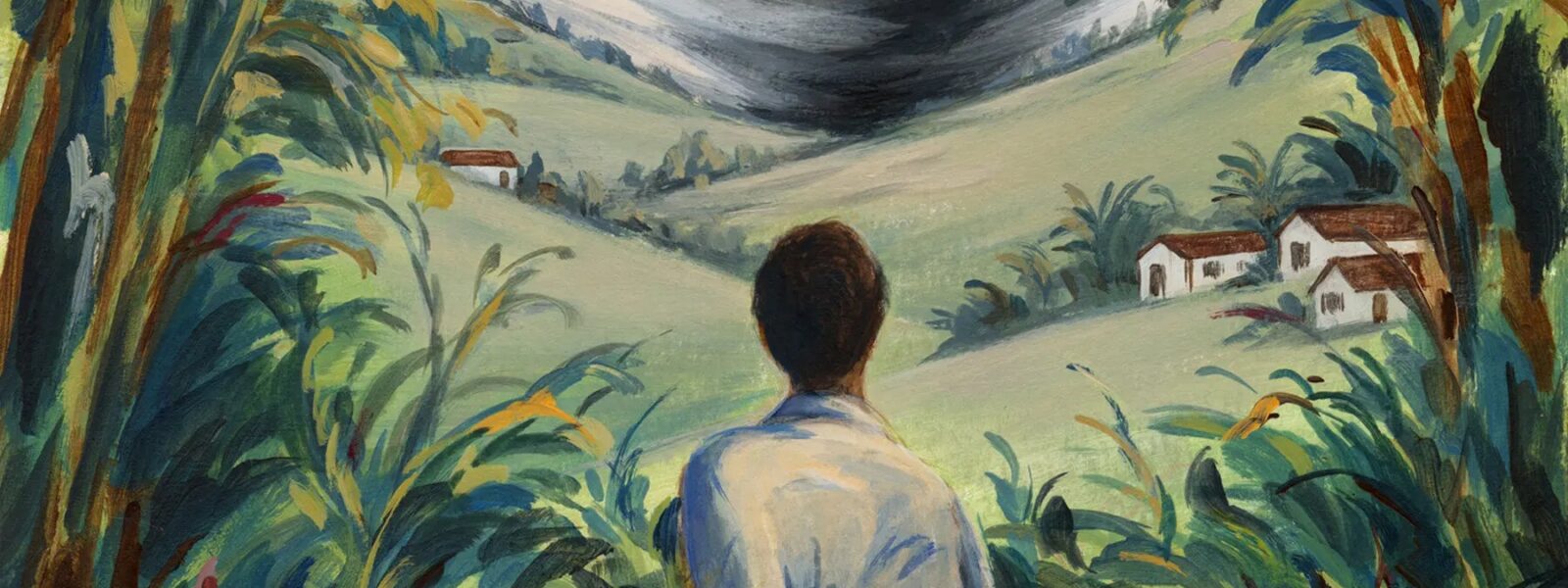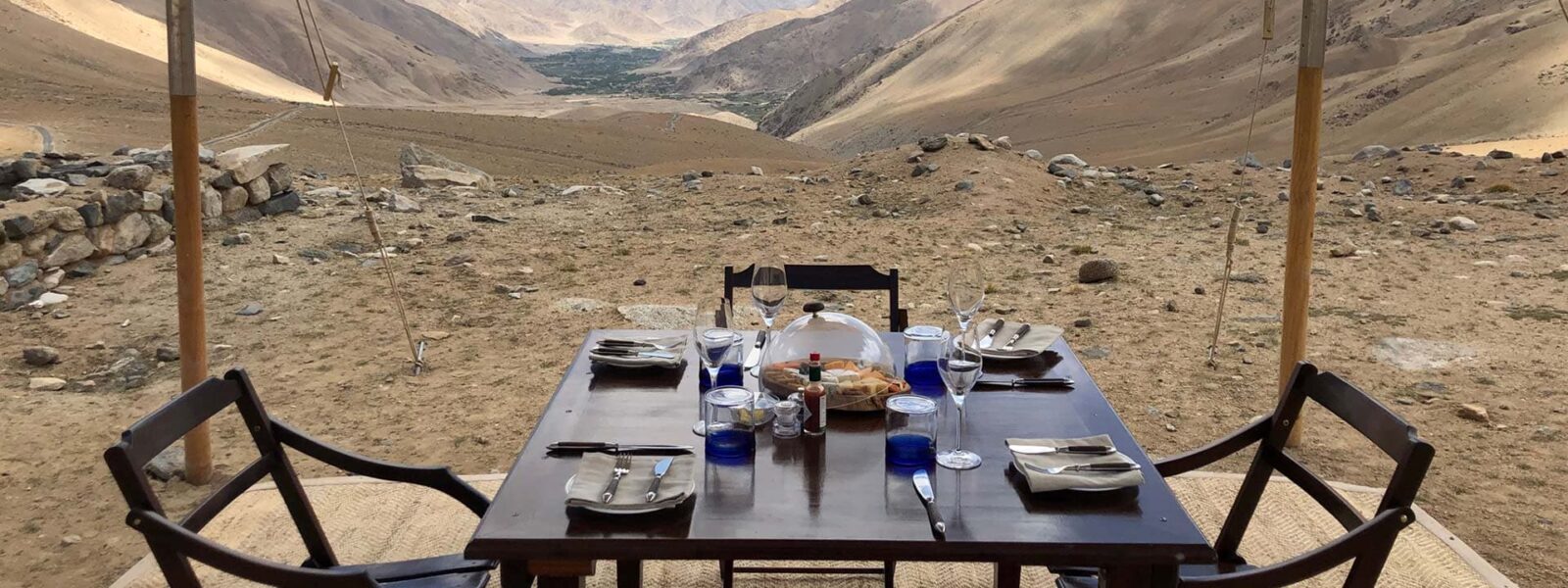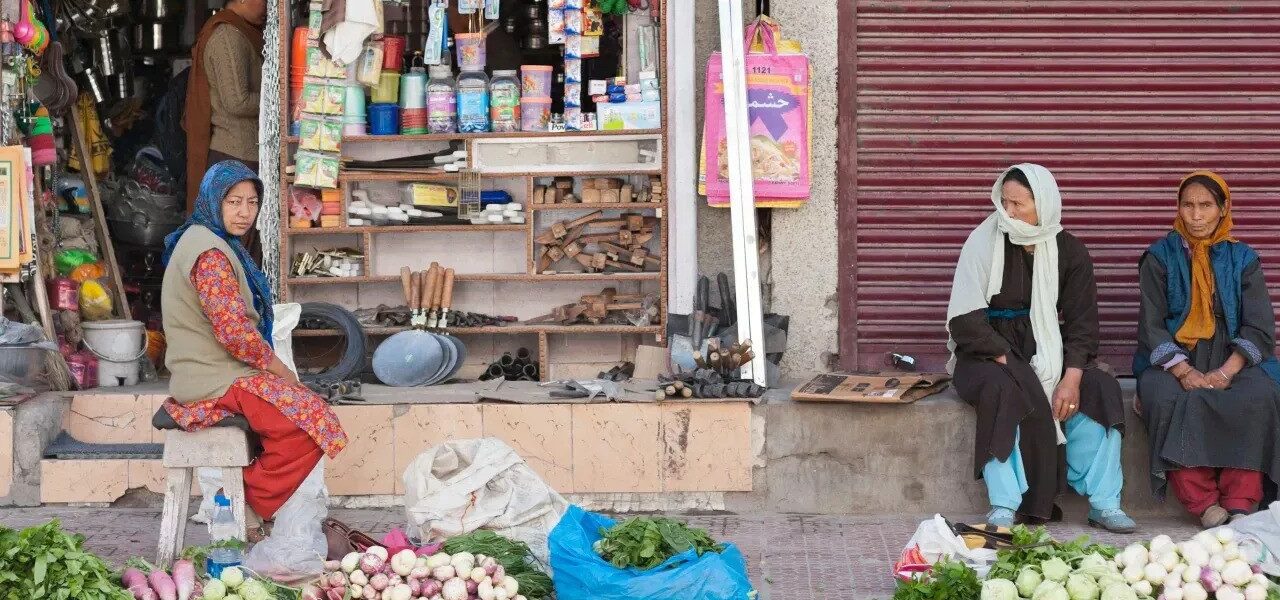Winter trekking in Ladakh is a test of endurance, but it rewards trekkers with some of the most stunning landscapes on Earth. Known for its rugged terrain, towering snow-capped mountains, frozen rivers, and remote valleys, Ladakh transforms into a winter wonderland during the colder months. For those willing to brave the sub-zero temperatures, Ladakh offers unmatched beauty and an adventure of a lifetime. In this comprehensive guide, we’ll explore the best winter treks in Ladakh, preparation tips, challenges, and why trekking in Ladakh during winter is an unforgettable experience.
Why Ladakh is a Top Destination for Winter Treks
Ladakh, nestled in the northernmost part of India, offers unique landscapes and thrilling challenges for trekkers, especially in the winter. When the summer crowds leave, the region’s pristine beauty remains, draped in a blanket of snow. The stark contrast of white snow against the clear blue skies, the tranquility of remote valleys, and the adrenaline rush of walking on frozen rivers make winter treks in Ladakh a bucket-list experience for adventurers.
Additionally, the isolation of trekking in Ladakh during winter means fewer crowds, giving you the opportunity to truly connect with nature. For seasoned hikers, high-altitude treks like the famous Chadar Trek or hidden trails in the Zanskar Valley offer unmatched beauty and a peaceful atmosphere.

The Best Time for Winter Treks in Ladakh
The winter trekking season in Ladakh typically lasts from mid-January to late February, with some treks extending into early March. During this period, temperatures can drop between -10°C to -30°C, creating ideal conditions for snow-covered trails and frozen rivers like the Zanskar River.
The best time to embark on a winter trek in Ladakh is during January and February when the snowfall is consistent, and the frozen landscapes are at their peak. However, trekkers should be prepared for the intense cold, altitude challenges, and rapidly changing weather conditions.
Top Winter Treks in Ladakh
The Chadar Trek: Walking on the Frozen Zanskar River
The Chadar Trek is undoubtedly the crown jewel of winter treks in Ladakh. Known for its dramatic frozen Zanskar River, this trek allows you to walk on a sheet of ice while surrounded by towering cliffs and snow-draped landscapes. The name “Chadar” refers to the icy “blanket” that forms over the river, creating a surreal and somewhat treacherous path.
- Duration: 9-10 days
- Difficulty: Challenging
- Highlights: Walking on a frozen river, icy caves, high-altitude passes
The trek covers a distance of about 62 km and takes you through isolated villages, offering a glimpse into the lives of locals who endure harsh winters in this remote region. The Chadar Trek is not just a test of endurance but a chance to witness the raw beauty of nature in one of its most extreme forms.
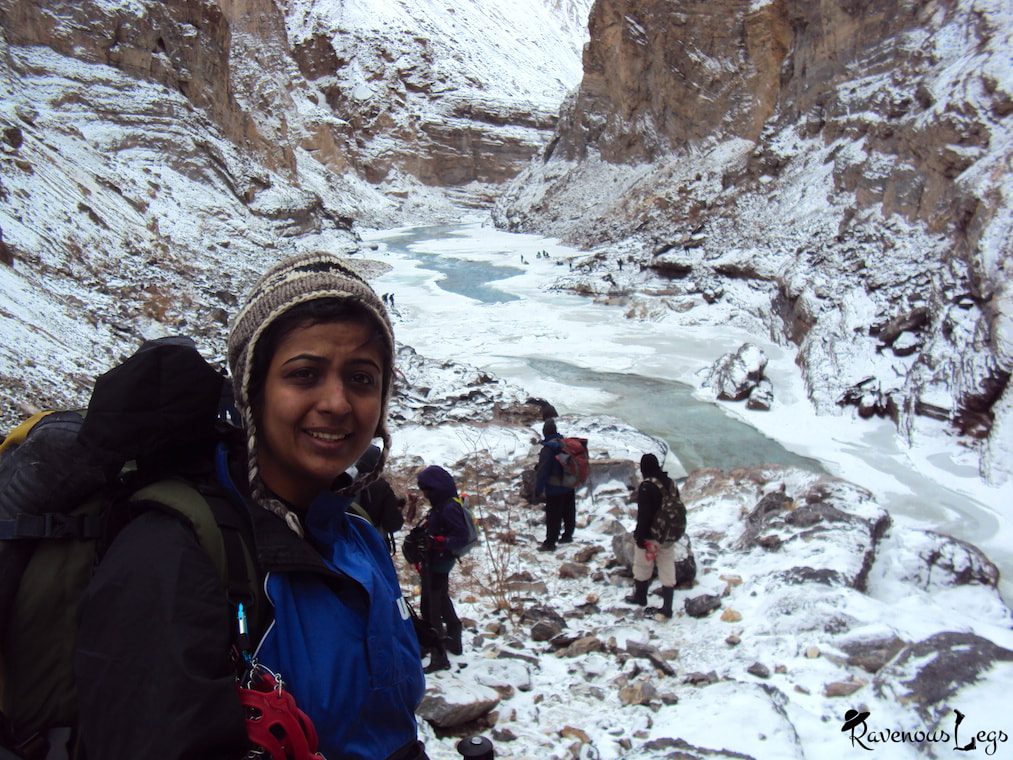
Snow-Covered Zanskar Valley Winter Trek
If the Chadar Trek seems too intense, the Zanskar Valley winter trek is another popular option. This trek takes you through the snow-covered landscapes of the Zanskar Valley, a high-altitude region that remains largely cut off during winter. The valley, known for its snow-covered trails and scenic views, is a paradise for adventure seekers.
- Duration: 7-8 days
- Difficulty: Moderate to challenging
- Highlights: Remote villages, snow-draped mountains, frozen rivers
This trek offers stunning views of towering peaks and frozen rivers, with the added benefit of being slightly less extreme than the Chadar Trek.
Offbeat Treks in Ladakh: Exploring Hidden Winter Trails
For those looking to escape the well-trodden paths, Ladakh also offers offbeat winter treks. These lesser-known routes take you through secluded valleys, offering solitude and breathtaking views.
- Trek to Sham Valley: A relatively easy trek that passes through the beautiful Indus Valley, perfect for beginners.
- Ney Trek: A short, offbeat trail near Leh, ideal for those looking for a quick yet exhilarating winter trekking experience.
These trails provide a serene environment for trekkers who want to avoid the crowds and experience the untouched beauty of Ladakh.
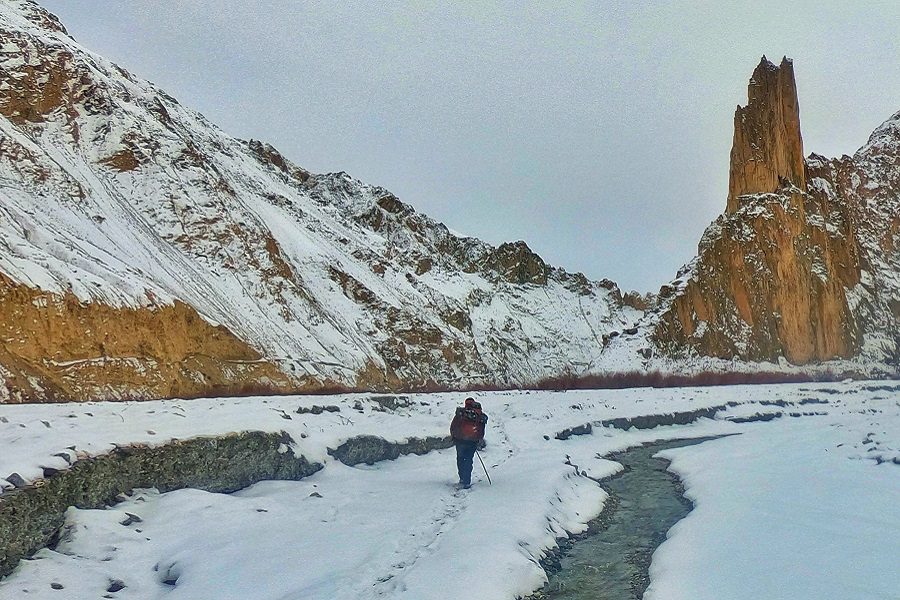
Preparing for a Winter Trek in Ladakh
What to Pack for a Winter Trek in Ladakh
Packing for a Ladakh winter trek is critical to ensure your safety and comfort in extreme conditions. Below is a comprehensive checklist of items you’ll need:
| Item | Description |
|---|---|
| Warm Clothing | Thermal base layers, fleece jackets, insulated outerwear |
| Trekking Boots | Waterproof, insulated boots with a good grip |
| Sleeping Bag | Rated for -20°C or lower |
| Trekking Poles | Essential for stability on icy trails |
| Headlamp | For navigating dark winter mornings and evenings |
| Water Bottles | Insulated bottles to prevent freezing |
| First-Aid Kit | Include altitude sickness medication, blister care, and painkillers |
Be sure to carry multiple layers to adjust to the changing temperatures and always have extra socks, gloves, and hats to stay warm.
Physical Preparation and Fitness for High-Altitude Winter Treks
High-altitude trekking in Ladakh requires physical fitness and mental resilience. Since most winter treks in Ladakh take place above 10,000 feet, trekkers need to prepare their bodies for the challenges posed by thin air and cold weather. Training should include:
- Cardio exercises: Running, cycling, or swimming to build endurance
- Strength training: Focusing on legs and core for stability on uneven terrain
- Altitude acclimatization: If possible, spend time at higher altitudes before your trek to allow your body to adjust.
Proper preparation will not only make your trek more enjoyable but will also help prevent altitude sickness.
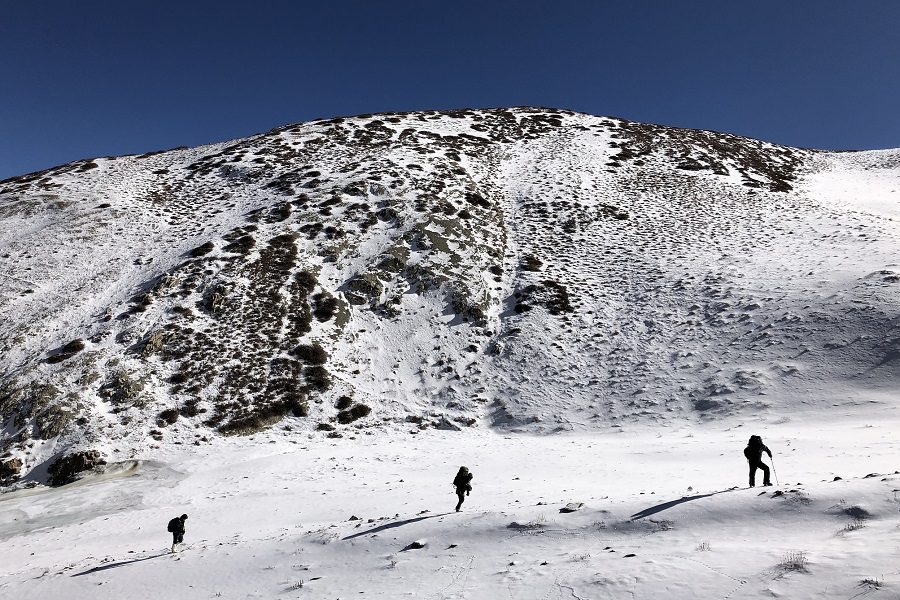
Challenges of Winter Treks in Ladakh
Extreme Cold: How to Survive Sub-Zero Temperatures
The cold is the most obvious challenge of winter trekking in Ladakh. With temperatures often plunging below -20°C, keeping warm is crucial for survival. Here are a few tips:
- Layer up: Wear multiple layers of clothing to trap heat.
- Stay dry: Wet clothes can drastically lower your body temperature, so always have waterproof gear.
- Stay hydrated: Cold air can dehydrate you quickly, so drink plenty of fluids even if you don’t feel thirsty.
Dealing with Altitude Sickness During Ladakh Winter Treks
Altitude sickness is a real concern in Ladakh, as most treks take place at high altitudes. Symptoms include headaches, nausea, and shortness of breath. Here’s how to manage it:
- Ascend slowly: Take your time to allow your body to adjust to the altitude.
- Stay hydrated: Proper hydration helps in preventing altitude sickness.
- Medications: Carry medication like Diamox to help acclimate faster.
Navigating Snow-Covered Trails and Frozen Rivers
Winter trails in Ladakh can be hazardous due to snow and ice. Walking on frozen rivers, like in the Chadar Trek, requires careful navigation to avoid slipping or falling through thin ice. It’s essential to:
- Follow your guide’s instructions at all times.
- Use trekking poles for balance on icy terrain.
- Check the weather conditions daily to avoid sudden snowstorms.
The Beauty of Ladakh in Winter


Snow-Covered Landscapes: A Photographer’s Dream
Ladakh’s winter landscape is nothing short of a photographer’s dream. The towering snow-covered mountains, frozen rivers, and pristine valleys provide endless opportunities for capturing stunning photos. The contrast between the white snow and the deep blue sky creates mesmerizing views that you won’t find anywhere else.
Winter Wildlife in Ladakh: Spotting the Elusive Snow Leopard
One of the highlights of winter trekking in Ladakh is the opportunity to spot rare wildlife, including the elusive snow leopard. The cold weather forces these animals to descend to lower altitudes, giving trekkers a higher chance of spotting them. Hemis National Park is one of the best places to look for snow leopards during winter.
Local Culture and Festivals During Ladakh’s Winter
Winter in Ladakh also offers a unique cultural experience. The locals celebrate several festivals, including Losar (Ladakhi New Year), which gives trekkers a chance to witness traditional music, dance, and rituals. Trekking through remote villages also allows you to interact with the warm and hospitable Ladakhi people, providing a cultural immersion that complements the natural beauty of the region.
Tips for Planning Your Winter Trek in Ladakh
Choosing the Right Winter Trek in Ladakh for Your Skill Level
Ladakh offers treks for all skill levels. Beginners can start with shorter, easier routes like the Sham Valley trek, while experienced trekkers can challenge themselves with the Chadar Trek or other high-altitude treks.
Health and Safety Tips for Trekking in Ladakh During Winter
- Acclimatize properly: Spend a few days in Leh to adjust to the altitude.
- Hydrate frequently: Drink warm fluids to stay hydrated and keep warm.
- Follow your guide’s advice: Always listen to your guide regarding weather conditions and safety.
Winter Trekking Packages and Guided Tours in Ladakh
For those looking for a more structured experience, there are several Leh Ladakh winter trek packages available. These packages typically include experienced guides, equipment, and safety measures to ensure a smooth and enjoyable trekking experience. Having a guide is especially important for challenging treks like the Chadar Trek, where local expertise is crucial.
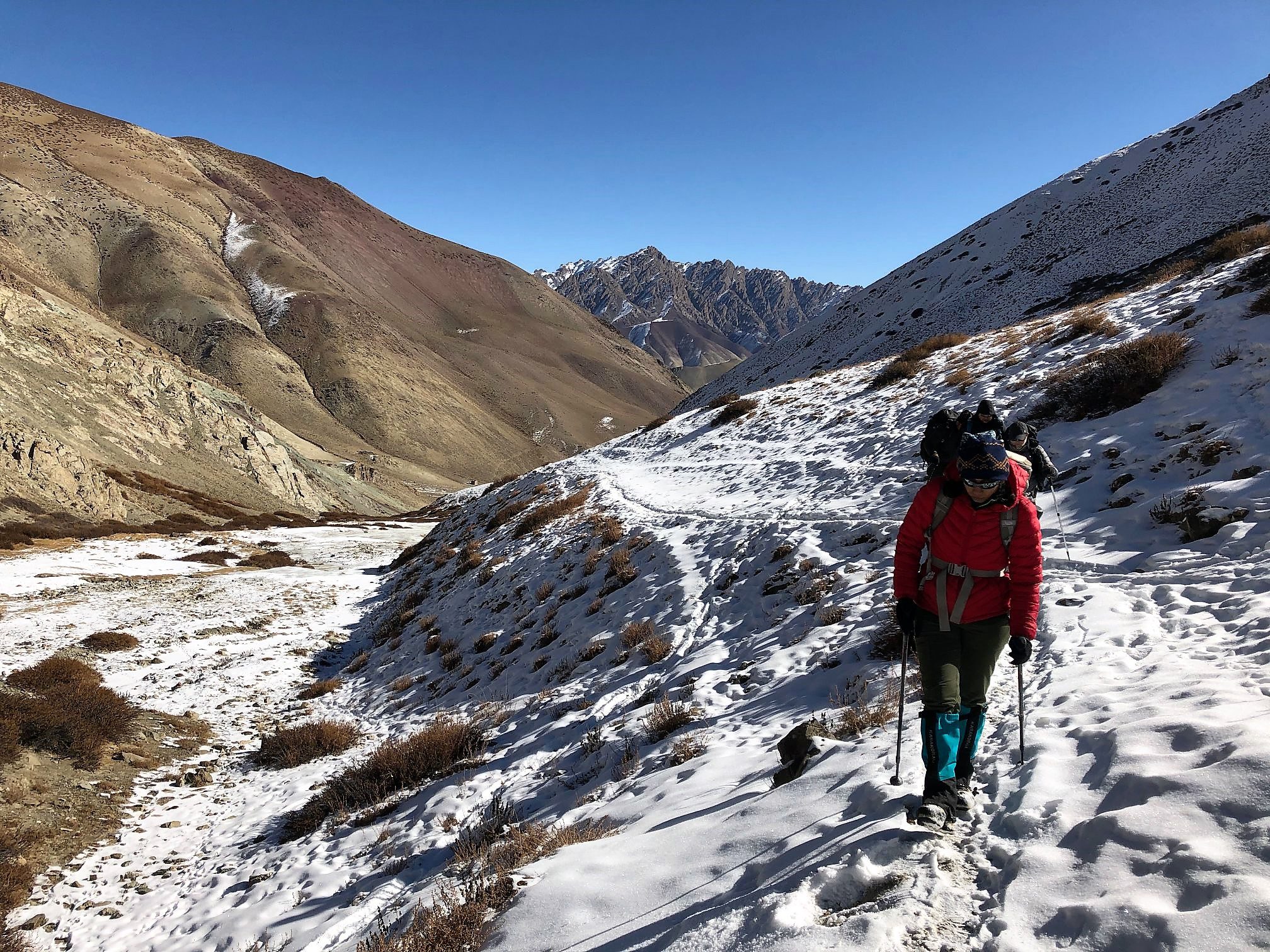
FAQs About Winter Treks in Ladakh
What is the Best Time for Winter Treks in Ladakh?
The best time for winter treks in Ladakh is from mid-January to the end of February, when the region experiences consistent snowfall and frozen rivers.
What Should I Pack for a Winter Trek in Ladakh?
Pack thermal clothing, waterproof gear, insulated boots, and a sleeping bag rated for -20°C to stay warm in Ladakh’s sub-zero temperatures.

How Cold Does it Get on Ladakh Winter Treks?
Temperatures on Ladakh winter treks can range from -10°C to -30°C, depending on the altitude and time of day.
Is Trekking in Ladakh Safe During Winter?
With proper preparation, guidance, and safety measures, winter trekking in Ladakh is safe. However, it requires physical fitness and the ability to handle extreme cold and high altitudes.
How Long Does the Chadar Trek Take?
The Chadar Trek typically takes 9-10 days, covering around 62 km on foot, with each day offering its own unique set of challenges and rewards.
Do I Need a Guide for Winter Treks in Ladakh?
Yes, having a guide is highly recommended for winter treks in Ladakh, especially for challenging routes like the Chadar Trek. Guides are crucial for navigating safely and understanding the terrain.
Conclusion: Brave the Cold for Unmatched Beauty
Winter treks in Ladakh are not for the faint-hearted, but for those who dare to take on the challenge, the rewards are extraordinary. From walking on frozen rivers to witnessing snow-covered landscapes, the beauty and adventure that await in Ladakh’s winter wilderness are truly unmatched. Whether you’re embarking on the Chadar Trek or exploring offbeat trails, the experience of winter trekking in Ladakh will leave you with unforgettable memories and a deep appreciation for the resilience of nature.

